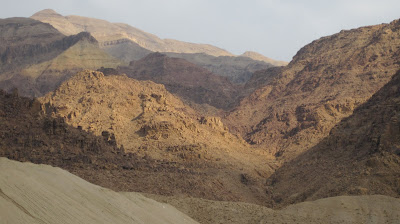Friday, May 28, 2010
Landscape Bouquet
Thursday, May 27, 2010
White Leaves in Vienna's Burg Garden
Wednesday, May 26, 2010
Vienna Ranks Number 1 Again!
My Favorite: Vienna's Natural History Museum
Until recently, my all-time favorite museum was Amsterdam’s van Gogh. I will never forget the first time I walked into that museum thirty years ago and there were a dozen or more of his landscapes in one gallery. As I stood in the middle of the room I experienced one of the most colorful, energizing and inspiring moments of my life. I left filled with happiness and appreciation. On my most recent return visit (three years ago) the museum was modernized and the colorful landscapes I loved and longed to see again were no longer in the same room. The magic of their juxtaposition was gone. I will feel forever fortunate that I was once able to see so many of his very colorful landscapes together in one room.
Today my favorite museum is undoubtedly Austria’s Natural History Museum in Vienna. It’s not the building although it is a grand palace. There are museums in fabulous buildings all over the world. It's not even the contents. Many natural history museums have outstanding collections of rocks and animals. The aspect I really love is it feels like it’s a museum of a museum. It’s the only place I’ve been where, upon entering the first collection, I feel like I’ve been invited to view the collections of the greatest scientists of the 1700s. It has a very authentic ambiance about it.
First, some of the grand aspects:



The labels for the rocks, minerals and gemstones are typewritten on aged paper and the collections are displayed in antique or reproduction Baroque cases. I hope the museum staff never succumbs to peer or interior designer pressure to modernize too much.


Like most natural history museums, they have an extensive collection of animals.


 An Irish Elk skeleton is silhouetted against a window:
An Irish Elk skeleton is silhouetted against a window:

Thursday, May 20, 2010
En Route To, Into and Out of the Dead Sea




The Dead Sea is evaporating and the surface level is dropping three feet per year...so if the Dead Sea is the lowest point on Earth, the lowest point on Earth is getting lower every year.




We frolicked and floated in the Dead Sea for a few minutes. Being able to effortlessly do a double ballet leg (a water ballet move I learned on a high school synchronized swim team decades ago in which you lift both legs simultaneously till they’re perpendicular to the water) was great fun. But as soon as water touched our lips or eyes, the burning sensation was so severe the fun was over.
I knew the Dead Sea had lots of minerals in it (and all kinds of products claim those minerals are great for your skin) but I still expected it to taste a bit like very concentrated ocean water or way-too-salty soup. Not so. When that water hit my lips my body’s self preservation system went into high animation and we skedaddled out of that water and over to the shower as fast as we could. Was it potash that burned so badly? We had passed Potash City with a large processing plant right on the Dead Sea. Or was it another harsh mineral? We later found an entry in Wikipedia saying sewage is dumped from the Jordan River into the Dead Sea! We weren’t far from the Jordan River! I don’t know if that is true or not and whether it was minerals or something else that caused such an intense burning sensation but I’m not sure I would go into the Dead Sea again. It might be best to just look at it, appreciating it from the banks and read about its remarkable geology, chemistry and history.
There is a spa in Bad Reichenhall, Germany—Rupertus Therme—near my favorite spot of Thumsee (see previous posts) where shallow pools give you a buoyancy similar to the Dead Sea. Floating there is a marvelous experience. We’ve even fallen asleep floating there!




































